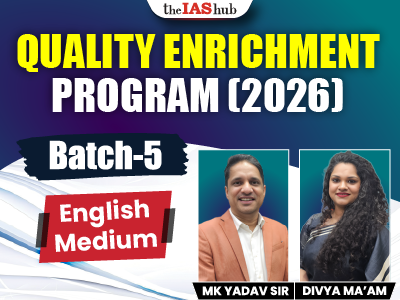Understand negative marking in UPSC Prelims and how it affects your score. Learn about CSAT negative marking, how to calculate penalties, and the impact on UPSC Mains penalty marks.

UPSC Civil Services Preliminary Examination follows a negative marking system that can significantly impact a candidate’s final score. Understanding negative marking in UPSC Prelims is essential for effective exam strategies. Candidates appearing for UPSC Prelims must be cautious while answering questions to avoid unnecessary loss of marks.
In this article, we explain negative marking in UPSC Prelims exam, CSAT negative marking, and how to calculate the penalty for incorrect answers.
Negative Marking in UPSC Prelims refers to the penalty for incorrect answers, where 1/3rd of the marks assigned to a question are deducted. This applies to both General Studies Paper-I and CSAT Paper-II, except for decision-making questions in CSAT. The UPSC Prelims exam consists of two papers:
Both papers have negative marking for incorrect answers. However, the marking pattern varies slightly between the two papers.
This means that for every incorrect answer, 1/3rd of the marks assigned to that question will be deducted.
Paper-Wise Breakdown explains how negative marking is applied separately in General Studies Paper-I and CSAT Paper-II, highlighting the deduction rules for each paper.
Since CSAT is qualifying in nature, candidates must score at least 66 marks out of 200 to pass.
How to Calculate Negative Marking in UPSC Prelims?
To calculate negative marking in UPSC Prelims, follow these steps:
CSAT Negative Marking: Important Points covers the penalty for incorrect answers in CSAT Paper-II, exceptions for certain questions, and strategies to minimize mark deductions.
Strategies to Avoid Losing Marks Due to Negative Marking include smart guessing, eliminating wrong options, and attempting only well-understood questions to minimize deductions. Some of the steps include:
Unlike Prelims, the UPSC Mains exam does not have negative marking for incorrect answers. However, candidates must be aware of certain penalty situations:
Understanding negative marking in UPSC Prelims is essential for a smart exam strategy. Both General Studies Paper-I and CSAT Paper-II have negative marking, so accuracy is more important than attempting a large number of questions.
By following a well-planned approach, candidates can minimize negative marking, improve their scores, and clear the UPSC Prelims efficiently. Avoid random guessing, practice previous year papers, and use elimination techniques to maximize accuracy.
Are you preparing for UPSC 2025? Join IAShub’s UPSC coaching batches to boost your preparation. Enroll now!
| Also Read | |
| Last 10 years UPSC Prelims Question Papers with answers pdf | Important Top 100 topics for Prelims 2025 |
| UPSC CSAT Math & Reasoning Syllabus | HOW TO PREPARE FOR CSAT |
Yes, CSAT has negative marking, where 1/3rd of the marks per question are deducted for incorrect answers, except for Decision-Making questions, which have no negative marking.
Yes, candidates can leave questions unattempted in both GS Paper-I and CSAT, and no marks will be deducted for skipped questions.
The CSAT paper qualifies, and candidates must score 33% (66 out of 200 marks) to pass, regardless of their GS Paper-I score.
Use the elimination method, attempt only well-understood questions, avoid blind guessing, and practice mock tests to improve accuracy.


Refine your answer writing skills and elevate your UPSC preparation with personalized support and expert feedback.
Fill out the form to get started with the program or any other enquiries !








Are you dreaming of becoming an IAS officer? Then, IAShub can be your best guide. It is one of the Best IAS Coaching in Delhi. Many students who want to clear the UPSC exam join IAShub for learning. The institute gives both online and offline classes. Their teachers are experienced and helpful. They easily explain every topic. Students also get notes, tests, and tips to do well in the exam.
IAShub is in Delhi and is trusted by many UPSC students. It offers coaching for every part of the UPSC exam – Prelims, Mains, and Interview. The classes are simple and easy to understand. The teachers are experts and guide students in the right way. IAShub is also known for its helpful notes, test series, and answer-writing practice. IAShub is the best coaching in Delhi and also gives UPSC Online Classes. This helps students from any place in India to learn. The online classes are live and also recorded. So, students can watch them anytime. These classes cover the full UPSC syllabus.
Here are some important services provided by IAShub:
The UPSC Civil Services Exam has three parts:
This exam is tough, but with the right guidance, it becomes easy to manage. Students must study smart and stay regular.
IAShub supports students from the beginning to the end. It gives the right books, tests, and notes. The classes are easy to follow, and the teachers are always ready to help. Students get personal doubt sessions too. The test series and answer checking help students learn where they need to do better. Also, free study materials save time and money.
IAShub also guides students during the final stage – the interview. Experts take mock interviews and give useful tips. This full support makes IAShub one of the best IAS coaching in Delhi.
